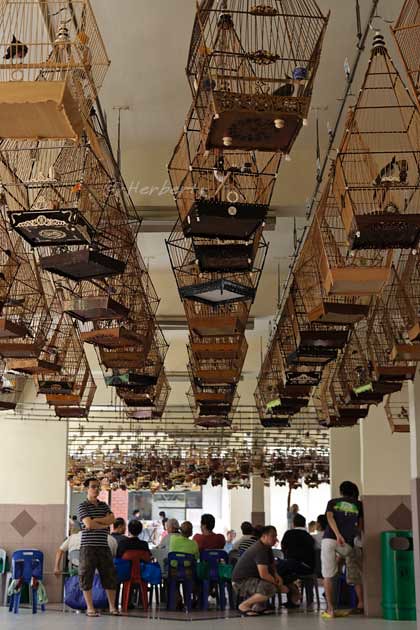
Location: Ang Mo Kio neighbourhood, Singapore (1� 22' 12.6? N, 103� 50' 44.23? E)
Date: 27 June 2010, 9.35am
Camera: Canon 400D with Sigma 17-70/f2.8-4.5
Despite its very modern facade, Singapore or more precisely Singaporeans still maintain many traditional habits and pastimes. One of them is enjoying bird singing. Every Sunday mornings, enthusiasts will gather at a few locations scattered around the island for their birds� regular training. The owners arrive with their birds -merboks, China thrushes, white rumped shamas, red whiskered bulbuls and mata putehs (white eyes) - some costing hundreds of dollars, in carved lacquered teak cages. The owners will try to choose a hanger near other birds that will encourage them to sing at their best as it is the nature of songbirds to try outperforming one another in the attempt to attract the opposite sex. While the birds sing, the owners will exchange tips and news or just simply enjoy the �music�. It is believed that a bird�s diet influence how it sings; so a songbird�s diet may include any of the following- live insects, fruits and/or hard boiled eggs. These are very useful practice sessions for owners who are planning to enter their birds in bird singing competitions- National Competition carry a cash price of $10,000. It is not uncommon for winning birds to be traded for thousands of dollars. This is another of the non-mainstream activities (on top of those recommended here) that is highly recommended to visitors to Singapore. Any visitors who may like to experience this unique gathering should note that the busiest period of any Sunday is between 8.00 am and 10.00 am.